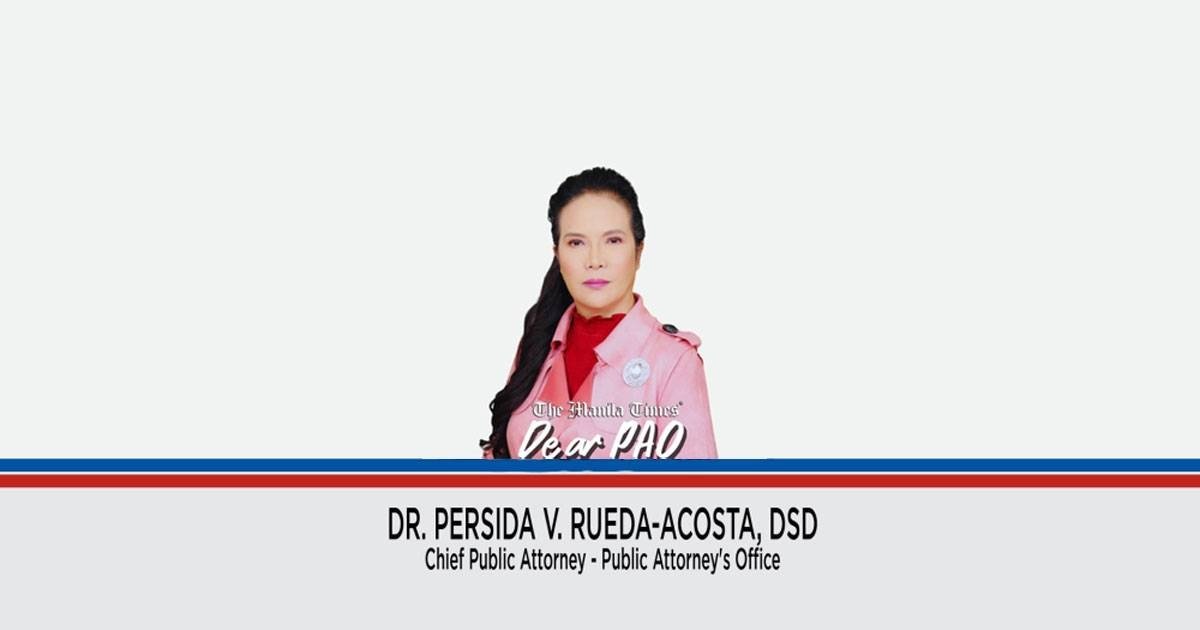Dear PAO,
My friend Jess was arrested in the act of selling prohibited drugs. One bystander who saw the incident relayed to me that when Jess was placed under arrest, the arresting officer took the prohibited drugs from the hand of Jess and immediately placed them inside his pocket. The other officer at the scene handcuffed Jess, while the officer who pocketed the evidence conducted a body search, which resulted in the recovery of the buy-bust money. After the search, the officer picked the seized evidence inside his pocket and marked it with his initials. We narrated the whole story in the radio program of a known lawyer, and he told us that the police officer seemed to have violated the procedure, especially the marking or handling of the seized evidence, and that is actually good for the defense of Jess. We are not that knowledgeable about the prevailing law on the matter, so we would like to know if there are existing guidelines or procedures that need to be followed in this particular situation.
Suzie
Dear Suzie,
The law specifically governing the situation of Jess is covered by Republic Act (RA) 9165, otherwise known as the Comprehensive Dangerous Drugs Act of 2002, as amended by Republic Act (RA) 10640. Section 21 (1) thereof states that:
“SEC. 21. Custody and Disposition of Confiscated, Seized, and/or Surrendered Dangerous Drugs, Plant Sources of Dangerous Drugs, Controlled Precursors and Essential Chemicals, Instruments/Paraphernalia and/or Laboratory Equipment. – xxx
“(1) The apprehending team having initial custody and control of the dangerous drugs, controlled precursors and essential chemicals, instruments/paraphernalia and/or laboratory equipment shall, immediately after seizure and confiscation, conduct a physical inventory of the seized items and photograph the same in the presence of the accused or the person/s from whom such items were confiscated and/or seized, or his/her representative or counsel, with an elected public official and a representative of the National Prosecution Service or the media who shall be required to sign the copies of the inventory and be given a copy thereof: Provided, That the physical inventory and photograph shall be conducted at the place where the search warrant is served; or at the nearest police station or at the nearest office of the apprehending officer/team, whichever is practicable, in case of warrantless seizures: Provided, finally, That noncompliance of these requirements under justifiable grounds, as long as the integrity and the evidentiary value of the seized items are properly preserved by the apprehending officer/team, shall not render void and invalid such seizures and custody over said items.”
Based on the facts you have narrated, there seems to be an irregularity in the seizure or confiscation of the prohibited drugs because the police officer who seized the evidence immediately pocketed the evidence instead of immediately marking it. There are actually guidelines that need to be followed by law enforcement officers in marking and conducting an inventory of seized prohibited drugs, and these were enumerated in Nisperos v. People, GR 250927, Nov. 29, 2022, where the Supreme Court, through the ponencia of Associate Justice Ricardo Rosario, said that:
“In order to guide the bench, the bar, and the public, particularly our law enforcement officers, the Court hereby adopts the following guidelines:
“1. The marking of the seized dangerous drugs must be done:
“a. Immediately upon confiscation;
“b. At the place of confiscation; and
“c. In the presence of the offender (unless the offender eluded the arrest);
“2. The conduct of inventory and taking of photographs of the seized dangerous drugs must be done:
“a. Immediately after seizure and confiscation;
“b. In the presence of the accused, or the person/s from whom such items were confiscated and/or seized, or his/her representative or counsel; and
“c. Also in the presence of the insulating witnesses, as follows:
“i. if the seizure occurred during the effectivity of R.A. No. 9165, or from July 4, 2002 until August 6, 2014, the presence of three (3) witnesses, namely, an elected public official; a Department of Justice (DOJ) representative; and a media representative;
“ii. if the seizure occurred after the effectivity of R.A. No. 10640, or from August 7, 2014 onward, the presence of two (2) witnesses, namely, an elected public official; and a National Prosecution Service representative or a media representative.
“3. In case of any deviation from the foregoing, the prosecution must positively acknowledge the same and prove (1) justifiable ground/s for non-compliance and (2) the proper preservation of the integrity and evidentiary value of the seized item/s.”
Applying the above-quoted decision to your situation, the police officer who seized the evidence failed to immediately mark the same upon confiscation. There is no assurance that his pocket was empty when he pocketed the evidence. As such, the integrity of the evidence was already compromised in this instance, considering that there was no guarantee that the drugs he retrieved from his pocket were the very same evidence confiscated from Jess. This is the effect of the deviation by the arresting officer from the established guidelines. Deviation from the guidelines may be allowed, but there must be justifiable ground/s for non-compliance and no doubt about the proper preservation of the integrity and evidentiary value of the seized items.
We hope that we were able to answer your queries. Please be reminded that this advice is based solely on the facts you have narrated and our application of the same. Our opinion may vary when other facts are changed or elaborated.
Editor’s note: Dear PAO is a daily column of the Public Attorney’s Office. Questions for Chief Acosta may be sent to [email protected]

